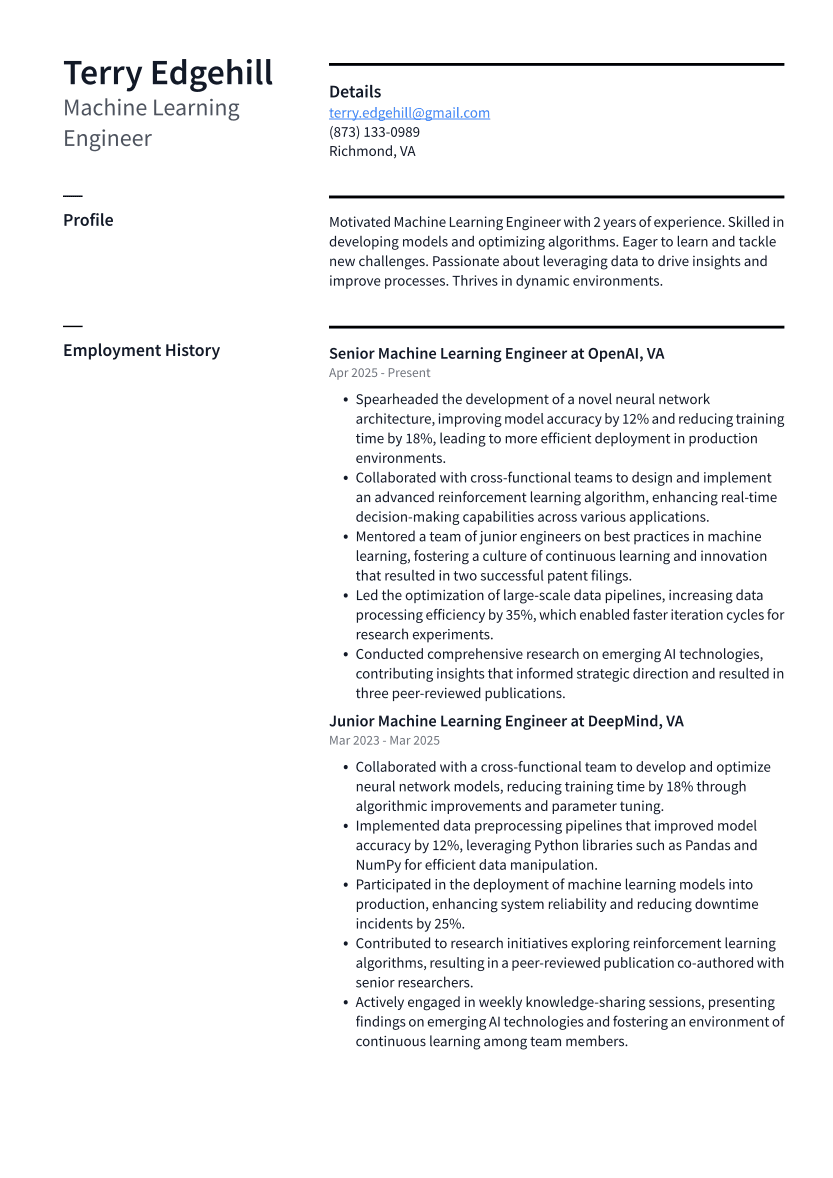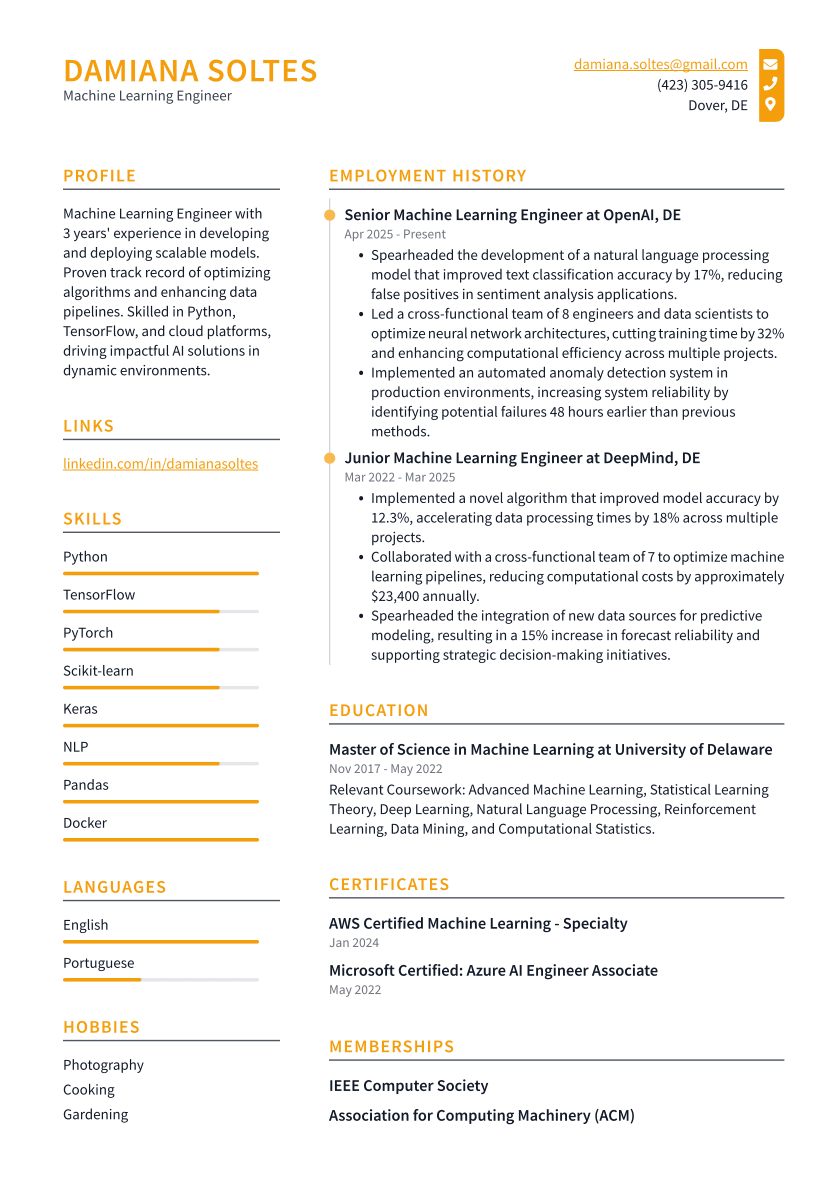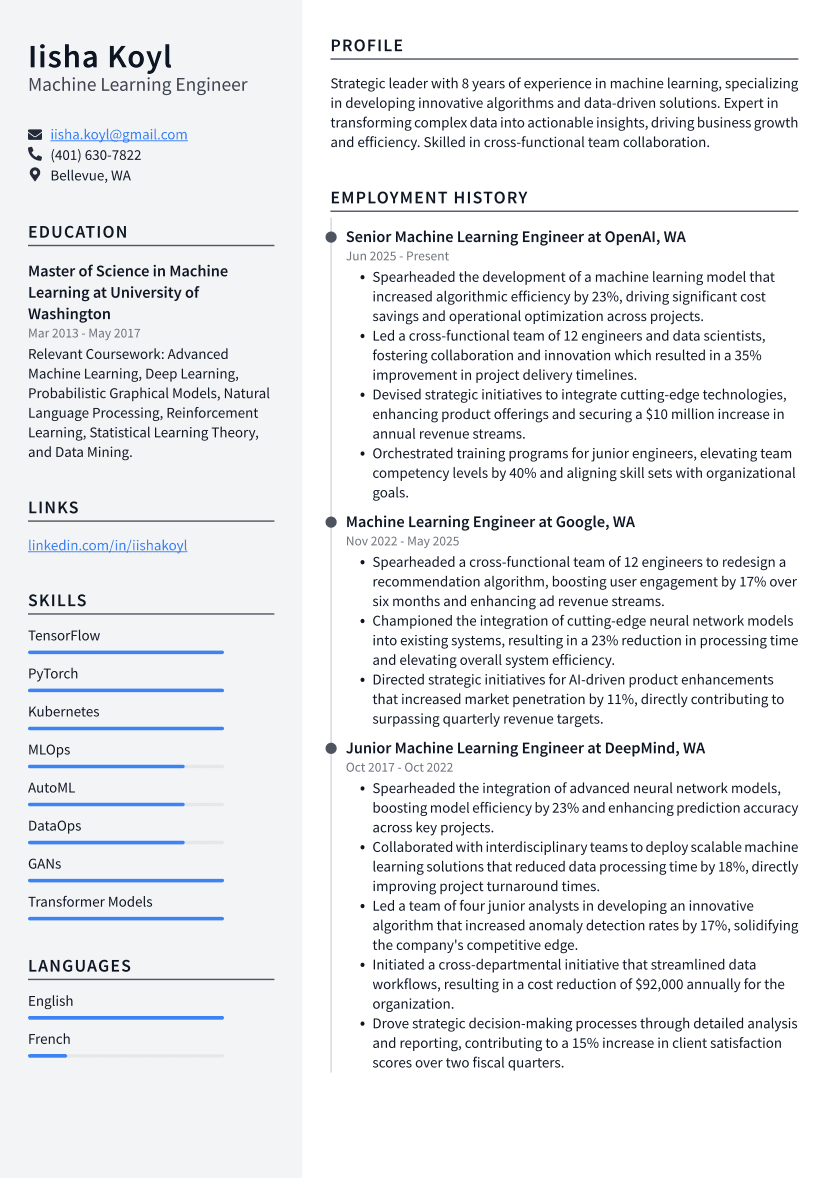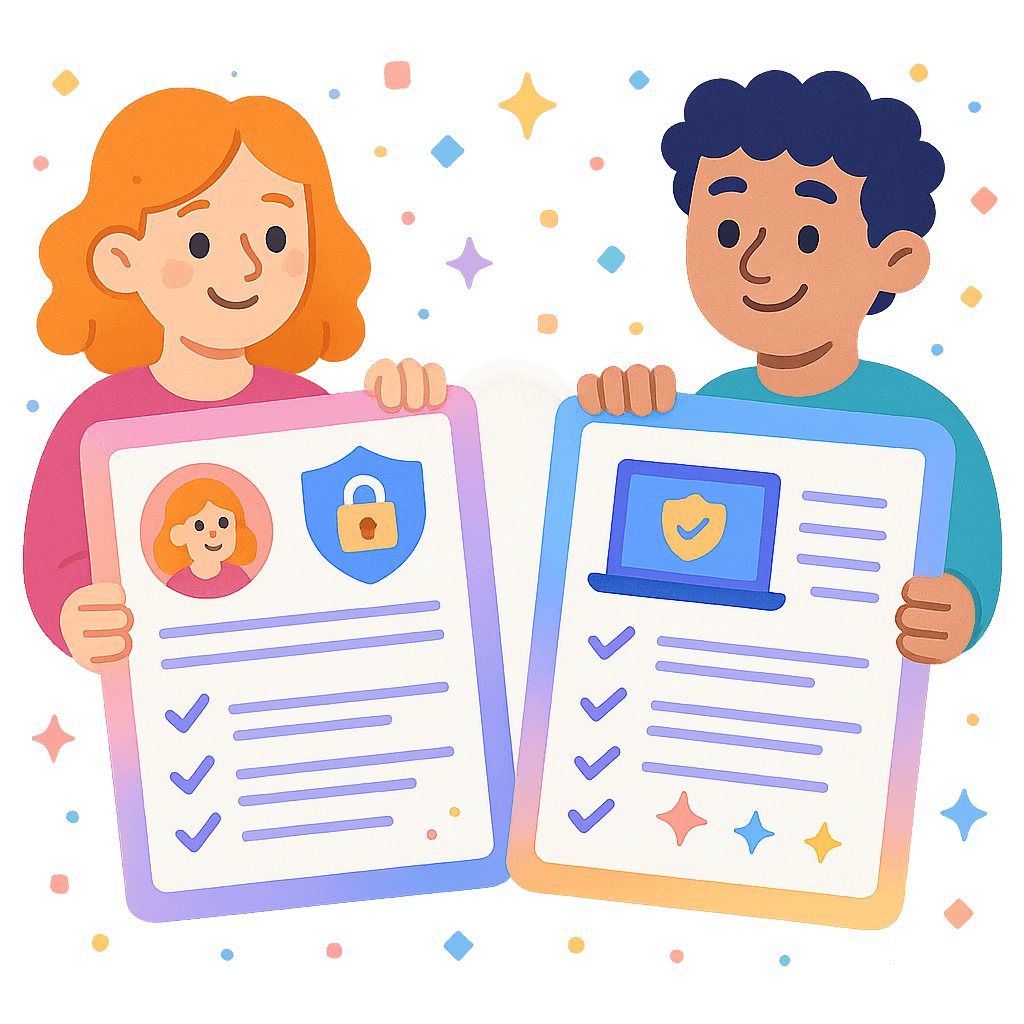Machine Learning Engineer Resume Examples

In the competitive jungle of tech careers, a Machine Learning Engineer's resume is your golden ticket—or rather, your cool, digital calling card—to stand out from the algorithmic crowd. This article decodes the art of crafting a knockout resume, ensuring even the most stoic hiring manager can't resist a second glance. Learn to sprinkle those keywords, highlight crucial skills, and charm your way to the top of the CV stack.
Key Sections to Add to Your Machine Learning Engineer Resume
- Contact Information: Name, phone, email, LinkedIn profile.
- Summary: Brief overview of expertise and career goals.
- Work Experience: Key roles and achievements in past jobs.
- Skills: Technical abilities and programming languages known.
- Education: Degrees, institutions, and graduation dates.
- Projects: Personal or professional machine learning projects.
- Certifications: Relevant industry credentials and courses completed.
- Publications: Research papers or articles published.
- Awards: Recognitions or honors received in the field.
Highlight your proficiency in programming languages like Python or R, showcasing projects where you've implemented machine learning algorithms from scratch or optimized existing models. Emphasize your experience with frameworks like TensorFlow or PyTorch, and detail how you've improved model accuracy or reduced computational costs in past roles.
Pro Tip: Crafting a Machine Learning Engineer resume with relevant skills and keywords is crucial to navigate the filter maze of ATS, ensuring your expertise doesn't vanish into the digital void before ever reaching human eyes.
Set Your Machine Learning Engineer Resume Apart
Showcase your accomplishments by weaving in metrics that illustrate the impact of your work, like how you elevated model accuracy by 20% or reduced processing time by 30%. Highlight projects where you spearheaded the development of algorithms that slashed costs or scaled operations, painting a vivid picture of your contributions and their tangible outcomes.
- Use clear, bold headings and subheadings to organize sections like "Experience," "Skills," and "Projects," making it easy for both human eyes and applicant tracking systems to scan through.
- Incorporate bullet points to list achievements and responsibilities, ensuring concise information delivery without overwhelming blocks of text.
- Select a professional, easy-to-read font, such as Calibri or Arial, and maintain a consistent font size throughout, with slightly larger sizes for headings to enhance focus and hierarchy.
Pro Tip: Tailoring your resume for each job shows employers you match their specific needs and increases your chances of standing out.
Sample Resume for Entry-Level Machine Learning Engineer
An entry-level Machine Learning Engineer resume typically showcases education and internships, while mid-level or senior resumes emphasize proven project leadership and specialized expertise.
Experienced Machine Learning Engineer Resume Sample
A mid-level Machine Learning Engineer resume highlights hands-on project experience and developing expertise, bridging the gap between foundational skills and leadership responsibilities.
Sample Resume for Senior Machine Learning Engineer
A senior-level Machine Learning Engineer resume delves into a rich tapestry of leadership, complex project management, and deep technical expertise, while entry or mid-level resumes often focus on foundational skills and individual contributions.
Machine Learning Engineer Resume Do’s, Don’ts, and Checklist
DO'S
- Highlight relevant machine learning projects and showcase their impact or results clearly.
- Use specific metrics or achievements to quantify your experience and contributions.
- Tailor your skills and experiences to align closely with the job description and requirements.
DON'TS
- Don’t rely on generic buzzwords—inject specifics about achievements instead. Avoid cluttering with irrelevant details that dilute the key skills and experiences. Steer clear of long paragraphs; opt for clear, concise bullet points to maintain focus.
CHECKLIST
- Highlight relevant skills that match the job description.
- Use clear, specific language to describe past achievements.
- Tailor your resume for each job application.
- Avoid jargon that might confuse those outside the field.
- Keep it concise, ideally one page.
- Proofread thoroughly to eliminate errors.






